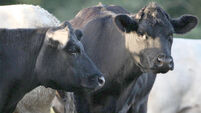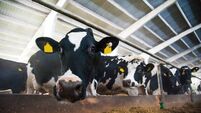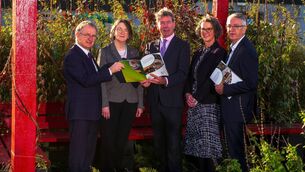Oliver Moore: Nitrogen holds key to good growth

For livestock, planning is key. If there are sheep on the farm, they will eat anything that’s there, and if cattle are coming out of sheds, if grass is not managed correctly, all grass will be gone.
Restrict sheep to specific areas, and close off areas to allow for growth later in spring, or other livestock.
The limiting factor for spring growth in an organic system is nitrogen availability. Later in summer, clovers and legumes can assimilate huge levels of nitrogen that will go towards grass growth, but clovers require high temperatures to fix nitrogen and these are not available in early spring.
If you have any slurry or soiled water, applying this can have a great boost, especially soiled water, which doesn’t taint the grass, but can have quite high nutrient levels, especially nitrogen.
Farmyard manure does not have high levels of readily available nitrogen. However, what it has will give an initial boost to grass growth. Remember, applications of farmyard manure will coat the grass for a number of weeks before grazing can commence.
If early grazing is essential, perhaps a few paddocks can be reseeded with varieties that are more suited to early growth. These paddocks will have to be minded specifically for early growth, from the autumn period throughout the winter.
Organic farming is dependent on legumes to fix nitrogen to encourage growth of grass.
Trapping these nutrients in the form of silage, haylage, or hay for feeding the following winter, in spring, is completely valid. Also, the longer livestock are in, the more manure they produce, which can fertilise more land subsequently.
While livestock out grazing don’t have to be fed and manure doesn’t have to be spread, if they are eating into reserves it would be of more benefit to leave livestock inside to allow a bank of grass become established. Provided, of course, sufficient silage is available to them.
As the saying goes, it take grass to grow grass and if all paddocks are grazed bare, it can take a long time before grasses can replenish themselves.
Tillage crop should not need an early growth burst. Cereal yields are dependent on total dose of nutrient. Timing is not critical. However, where a crop is suffering, over winter, from pest-grazing, waterlogging or poor establishment, perhaps some dirty water might get a crop started.
However, this source of nutrient is generally too valuable in an organic rotation to apply on cereals. The purpose of cereals in an organic rotation is to deplete soil reserves that have been built up from other crops, such as grass, potatoes, beans, and so on. Too much nutrient will also encourage disease and lodging risks, so perhaps the best solution is to leave the cereals to forage for nutrient themselves.
Vegetable crops are different and some crops require high levels of nutrients early, especially brassicas, leeks, celery, and so on. These crops are valuable, so any manure available should be applied to these crops as a priority.
The secret is to have sufficient organic manures available to apply on the crops. Again, organic manures tend to be slow to release their nutrients, but generally well-managed manures will have some level of readily available nutrient to kickstart growth early in the season.









